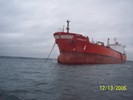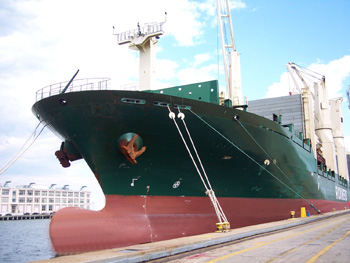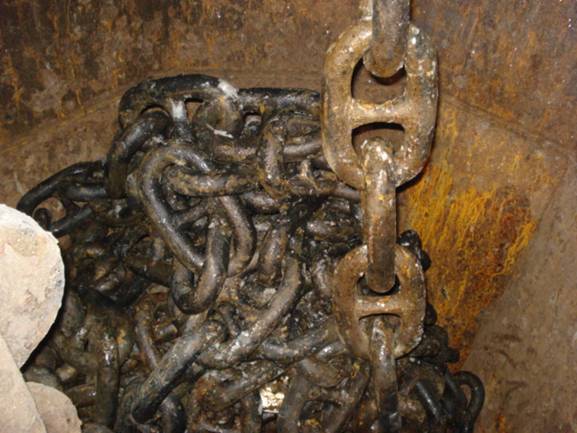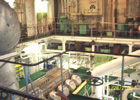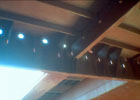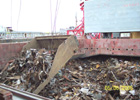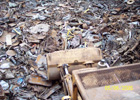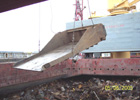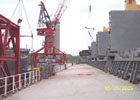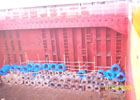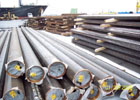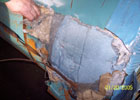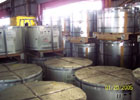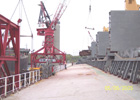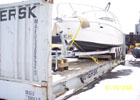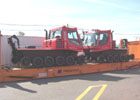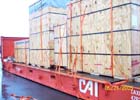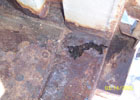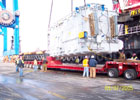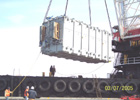Protection and Indemnity (P&I) Surveys :
INSPEX Marine can be appointed to conduct P&I surveys. Capt. Ceylan, as a P&I surveyor, has represented North of England P&I Association Ltd and West of England P&I Club.
Pre-Purchase Vessel Condition Inspections:
INSPEX Marine conducts pre-purchase vessel condition inspections for Ship Owners intending to purchase vessels. INSPEX Marine ensures providing a detailed assessment of ship’s condition, structural soundness, condition of holds, cargo and ballast tanks, including ship’s equipment and machinery condition supported by photographs.
On/Off-Hire Condition Surveys:
On, or Off-Hire condition surveys are conducted with a representative of both Ship Owners and Charterers. On/Off-Hire surveys includes inspection on the physical condition of each cargo hold, weather deck, and cargo gears. Upon request, taking the soundings of fuel tanks and reporting the bunker at the time of On/Off-Hire, and/or at a specific time and date can also be conducted.
Draft Surveys - Volume And Weight Calculations:
Draft Surveys are to determine the quantity of cargo loaded in, or discharged from a vessel or barge and are dependent on the fact that the vessel or barge is always afloat, and that all the drafts are visible. Some of the common problems during draft surveys one should always be aware of are:
-
Unusable sounding pipe - i.e., inaccessible, blocked or broken
-
Ballast holds, which are poorly calibrated
-
Tunnel space/duct keel that cannot be sounded
-
Loaded vessel aground prior to commencement of discharge
-
Loaded vessel aground after completion of loading prior to sailing
-
Listed vessel, which has its effect on displacement and soundings of liquids in tanks and other spaces
-
Weights other than the cargo, ballast, or consumables that are not the same between the starting and the finishing surveys.
Back To Top
Dead Freight Surveys/Maximum Loadable Quantity:
Dead Freight surveys are performed for the purposes of determining the amount of cargo that the vessel could have loaded if all the available space in cargo compartments was utilized provided there is no draft limitation.
Back To Top
Bunker Surveys:
Bunker surveys are, usually, requested for Charter purposes, and the INSPEX Marine surveyor may be called upon to represent either Ship Owners or Charterers. In most cases, this type of survey is conducted with the representation of both parties.
Back To Top
Vessel Loading Scrap Metal:
-
Sufficient scrap cargo should be lowered into the hold to cover the tank top.
-
The cargo should be handled carefully in order to avoid damaging the ship’s structure.
-
Every effort should be made to prevent heavy pieces of scrap from rolling against the shell plating and bulkheads. This is especially important when loading high-density material such as motor blocks, etc.
-
This type of cargo should be leveled to the extent that there is no possibility of shifting.
Annex 9 of CSS Code - Safe stowage and securing of metal scrap in bulk
The hazards involved in transporting metal scrap include:
1. shifting of the stow which in turn can cause a list;
2. shifting of individual heavy pieces which can rapture the sideplating below the waterline and give rise to serious flooding;
3. excessive loading on tank tops or tween-decks; and
4. violent rolling caused by excessive metacentric height.
Recommendations:
1. Before loading, the lower battens of the spar ceiling should be protected by substantialdunnage to reduce damage and to prevent heavy and sharp pieces of scrap coming in contact with the ship's side plating. Air and sounding pipes, and bilge and ballast lines protected only by wooden boards, should be similarly protected.
2. When loading, care should be taken to ensure that the first loads are not dropped from a height which could damage the tank tops.
3. If light and heavy scrap is to be stowed in the same cargo space, the heavy scrap should be loaded first. Scrap should naver be stowed on top of metal turnings, or similar forms of waste metal.
Scrap should be compactly and evenly stowed with no voids or unsupported faces of loosely held scrap.
4. Heavy pieces of scrap, whcih could cause damage to the side plating or end bulkheads if they were to move, should be overstowed or secured by suitable lashings. The use of shoring is unlikely to be effective because of the nature of the scrap.
5. Care should be taken to avoid excessive loading on tank tops and decks.
Back To Top
Vessel Suitability To Carry Scrap Metal:
This type of survey is performed to determine the suitability of cargo worthiness of the vessel, which includes, but is not limited to, a thorough examination of the weather deck and the cargo compartments.
Back To Top
Hatch & Damage Surveys:
This type of survey is usually performed for Ship Owners, Charterers or ship operators, and is conducted for the purpose of reporting the condition of cargo stowage at the time of holds are opened before the commencement of discharge.
Back To Top
Out-Turn Surveys:
This type of survey is conducted on vessel’s arrival at the discharge port for the purposes of establishing any damages and/or shift of break-bulk cargo, which mostly includes steel products. This survey often requires Silver Nitrate testing for chloride residues. The survey is also carried out for the entire discharge operations to ascertain as to whether alleged damages have occurred either before or after or perhaps during discharge.
Back To Top
Cargo Superintendency:
INSPEX Marine is fully aware of the fact that marine surveyors are one of the most vital key players in international shipping. INSPEX Marine can be appointed to supervise and oversee the cargo operations at load or discharge ports to ensure that a smooth and swift cargo operations would be achieved.
Back To Top
Flat-Rack Securing Inspections:
INSPEX Marine conducts Flat-Rack securing inspections in accordance with Cargo Stowage and Securing Annex 13.
Bulky and unwieldly cargo that cannot be placed inside a container may be placed onto a flat-rack for transportation by container vessel with securing of the cargo onto the flat-rack carried out by non-technical mariners, possibly at an inland location far from the port.
Although the flat-rack can be considered as standardized cargo and will be secured on board the vessel using the securing arrangement specified in the Cargo Securing Manual, the securing of the cargo to the flat-rack can be considered non-standard and should be in accordance with the CSS Code.
Back To Top
Container And Portable Tank Inspections:
INSPEX Marine provides the following container and portable tank inspections:
-
Container condition surveys for cargo suitability
-
Container inspections for handling damages
Back To Top
Other Technical & Cargo Surveys:
INSPEX Marine can be appointed to conduct other technical & cargo surveys in the vital areas of insurance, security, stowage, regulations, and compliance.
|

